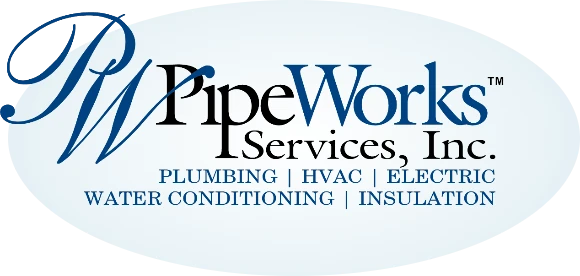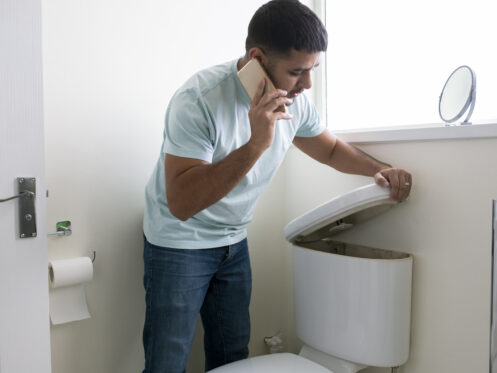As a homeowner, you may have to deal with a low water level in one or more of your toilet bowls. This situation is frustrating because it makes it challenging to keep the bowl clean and may result in frequent clogs.
A Hidden Leak
Leaks in your toilet can be tricky to spot but can significantly lower the water level in the bowl. Damaged pipes, seals, or hairline cracks can lead to slow water loss. A crack in the bowl could cause water to seep under the floor, potentially leading to unseen damage over time. Alternatively, a crack in the tank might result in water dripping down the back of the toilet, which often goes unnoticed until the puddle becomes substantial.
Unfortunately, repairing cracks in a porcelain bowl or tank is usually not possible because the material is too brittle and prone to further damage. Once a crack forms, it tends to spread, making it difficult to seal effectively. In most cases, the best solution is to replace the toilet to prevent ongoing leaks and potential water damage. However, a plumber can easily replace worn seals or problematic pipes.
A Damaged Fill Valve or Flapper
A malfunctioning fill valve or flapper could also be the culprit behind a toilet with a low water level. These two components are essential for controlling water flow between the tank and the bowl.
The fill valve is responsible for refilling the tank with water after each flush. If the fill valve is damaged or worn out, it may not allow enough water into the tank. A faulty valve might also be partially blocked, causing the tank to fill too slowly and affecting the water level.
The flapper is a rubber seal located at the bottom of the tank. It opens when you flush, allowing water to flow from the tank into the bowl, and closes to hold water in the tank afterward. If the flapper is damaged, it may not open fully, restricting water flow. Alternatively, if the flapper doesn’t close properly, water can continuously leak into the bowl, making the toilet appear to flush on its own or causing the water level to remain low.
In some cases, the chain or handle connected to the flapper might be the issue. If the chain is too short or tangled, it can prevent the flapper from lifting properly. Similarly, if the handle is stuck or not functioning correctly, it might not lift the flapper for a full flush.
Addressing these issues involves replacing the damaged parts, a simple repair for a professional plumber. Regular maintenance of the fill valve and flapper can also help prevent these problems from occurring in the first place.
Check the Shut-off Valve
The shut-off valve is a common yet easily overlooked cause of low water levels in a toilet. If the valve isn’t fully open, it can restrict the water flow into the tank, preventing it from filling correctly. This could result from simply not reopening the valve completely after performing maintenance or repairs. Or a curious child may have turned the valve partially off without anyone realizing it.
To resolve this, check the valve behind the toilet and ensure it’s open by turning it clockwise (to the right). If the water level remains low after adjusting the valve, it’s best to call a plumber to inspect for other underlying issues. You should also have a professional replace this component if it is hard to turn or corroded.
Clogged Inlet Holes
Water flows from the tank into the toilet bowl after being released by the flapper through small inlet holes under the rim. Over time, these holes can become clogged with mineral deposits, particularly in homes with hard water. When the inlet holes become clogged, the water flow into the bowl becomes partially blocked, leading to lower water levels.
Homeowners can address this problem by using simple methods to unclog the inlet holes. One effective approach is to pour white vinegar into the toilet tank and flush. This first flush will force the vinegar into the inlet holes. It helps dissolve mineral buildup and works well against lime deposits. Allow the vinegar to sit for at least 30 minutes before flushing again. After, take a small wire brush and carefully insert it into each inlet hole under the rim, gently scrubbing or poking through any buildup to clear the blockage.
For tougher deposits, you can apply a toilet bowl cleaner specifically formulated for hard water stains directly under the rim. Let the cleaner sit for the recommended time on the label, and then scrub the holes again with a brush or wire. Finally, flush the toilet several times to dislodge and wash away any remaining debris. Regularly cleaning the inlet holes can help maintain proper water flow and prevent the issue of low water levels in the bowl. If buildup becomes a recurring problem, you can talk to your plumber about installing a water softener for your home. They remove hard water minerals from your house’s water supply, preventing buildup in your toilet and other plumbing fixtures.
You Have the Wrong Wall Fitting
If you live in a home with back-to-back toilets in adjacent bathrooms, a low water level in one may be due to the fitting in the wall that joins the two commodes. Older homes that have not had their plumbing remodeled may have what is known as a sanitary cross or double sanitary tee fitting. These older fittings have nearly horizontal branches from each toilet that slope slightly as they connect to the main drainage pipe. While this design worked fine for older toilets that flushed slowly, it can cause problems with newer toilets with faster and more forceful flushes.
When one toilet is flushed, the rapid movement of water through the drain can push air out of the central pipe and into the branch connected to the other toilet. The air pressure forces water up in the second toilet, creating a wave effect that eventually crashes back down. Some can flow over the toilet’s trap and into the drain as the water settles. Over time, repeated flushes can cause the water level in the second toilet to drop significantly as more water is lost.
To solve this situation, a professional plumber can replace the outdated fitting with a double combination Y fitting. This modern fitting uses steeper angles in the branch pipes, which helps direct the water flow more efficiently and prevents one toilet from impacting the other during flushing. This project involves significant alterations to the plumbing in the wall between the two bathrooms. A professional should handle it to ensure proper installation and long-term functionality.
Contact the Pros
At Pipe Works Services, we have served Chatham, NJ residents for over 20 years. We can help with all your plumbing needs, including toilet repair and replacement and all bathroom fixtures. Additionally, we install, maintain, and repair heating and cooling systems. Contact us today to schedule an appointment with one of our talented professionals.





